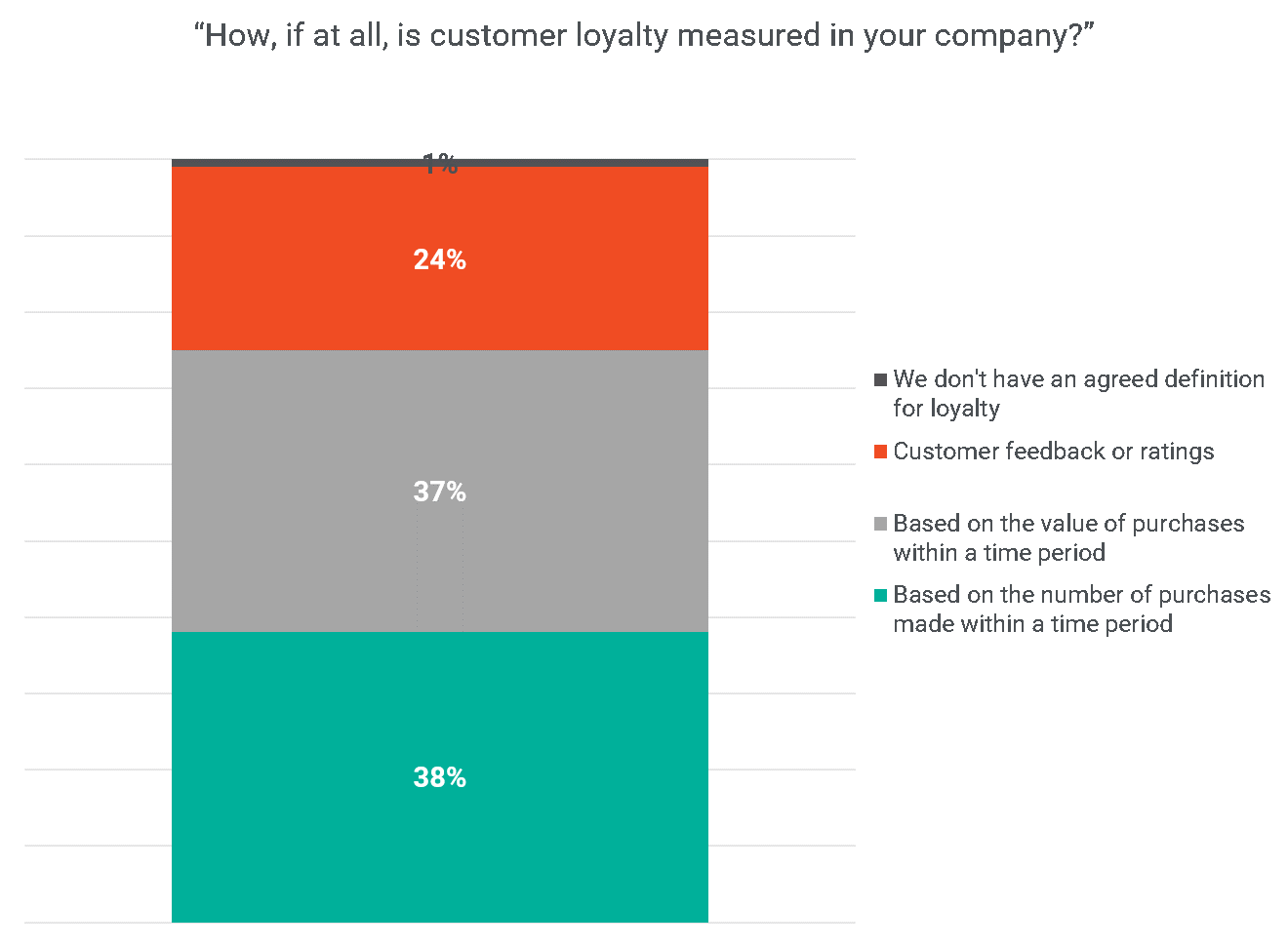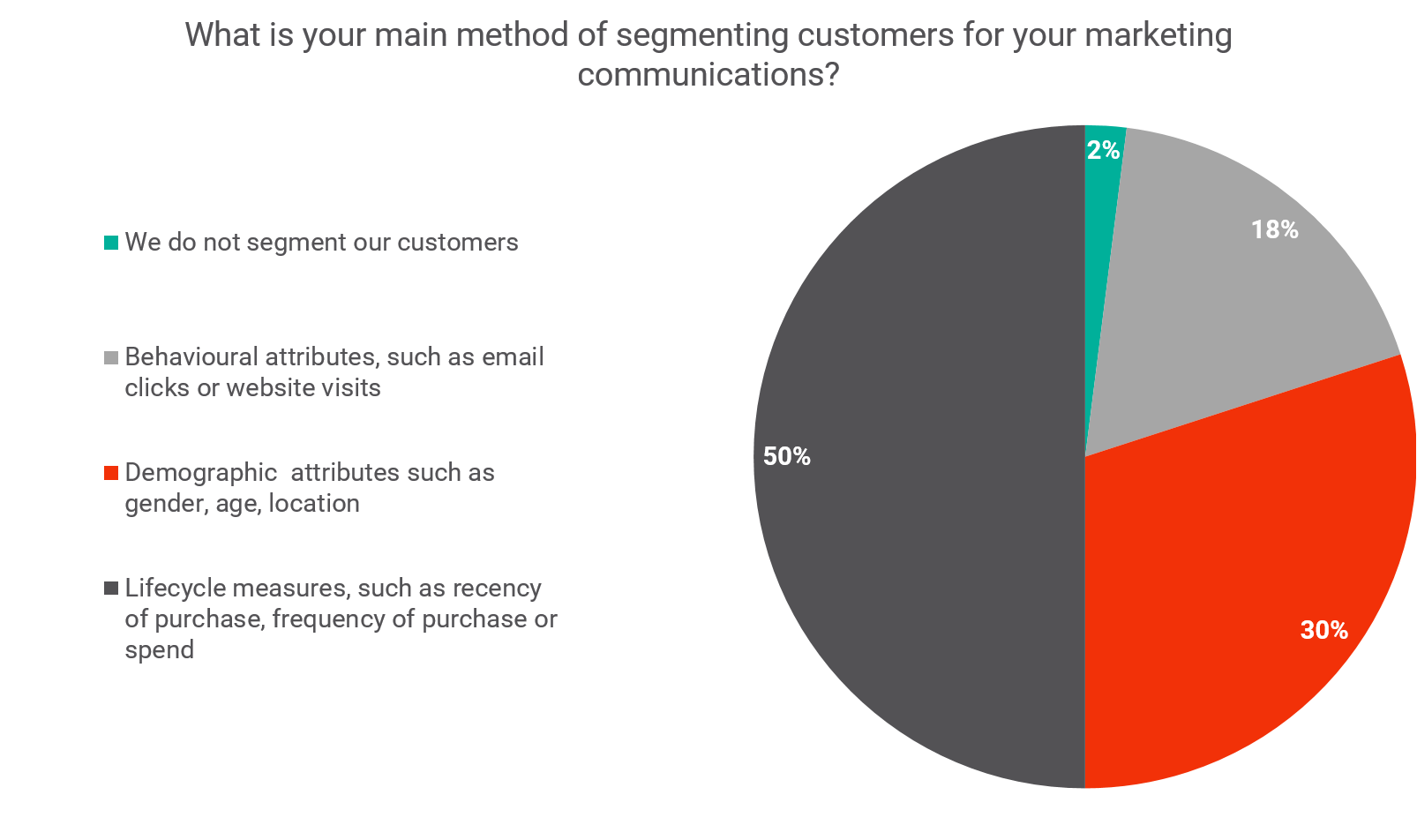3 Customer Loyalty Mistakes Retailers Make – and How to Avoid Them
It is a well-known fact that it is more expensive to recruit than to retain customers – with the statistic ranging anywhere from five to 25 times more expensive, depending on the study you read and which sector you’re in.

Not only that, but loyal customers are, generally speaking, also your most valuable - they cost less to retain in terms of marketing and promotion, but they also spend more. As a result, loyalty and customer retention are fundamental for growth – this is a basic that every retailer has to master.
We recently surveyed 500 fashion retailers across Europe to find out about their approach towards customer loyalty – how they are defining, measuring and tracking it. While loyalty is on everyone’s list, we found plenty of scope for improvement. Find out what 3 mistakes to avoid here.
1) Not taking a cross-channel view of loyalty
eCommera’s recent survey revealed that almost all retailers measure customer loyalty (99%), with the majority basing this on the number (38%) or value (37%) of purchases made within a specific timeframe. A quarter rely on customer feedback or ratings as their main measure of customer loyalty.
.png)
And when asked to divide their customer base into loyal customers, one-time only buyers and occasional shoppers, the retailers surveyed reported an almost even mix across the three customer segments. Rather than a reflection of reality, this perhaps highlights the difficulty of accurately measuring loyalty across channels.
Indeed, loyalty is very difficult to measure across channels, due to its reliance on a single view of the customer – still a pipe dream for many retailers. But without it, it is near-impossible to gain insight into key questions such as how many customers are one-time-only shoppers and how many purchases it takes for a customer to become “loyal”, which in turn allows retailers to better segment, target and serve specific customers.
All retailers should therefore aim to implement a single view of the customer. There are various solutions available to help streamline this process, but it is ultimately about collating customer data from disparate sources – including online, in-store and contact centre data; cleaning and consolidating this data; and then getting it into a usable format to inform the customer segmentation and loyalty process.
2) Using misleading KPIs
Net promoter score (NPS) and similar customer feedback metrics are often used by retailers to measure satisfaction levels among their customer base, as an indication of potential future loyalty. In our recent survey of 500 European fashion retailers, only 3% of those surveyed were unable to provide data around their company’s NPS performance, with retailers reporting that most of their customers are fairly satisfied to very satisfied with their services.
Although NPS is a useful customer loyalty metric - and one that should be monitored closely by retailers – it is important to remember that NPS and feedback ratings are based on what customers say, rather than what they actually do. In other words, when establishing KPIs for your loyalty strategy, it is much more important to look at what’s really happening, i.e. how many customers are actually returning to make a second, third or tenth purchase.
This is where having a single view of the customer is vital. One of the main challenges of customer retention is to encourage loyalty whilst maintaining a positive ROI - that is recruiting and retaining “good”, profitable customers and not being too promotionally-led. Retailers should avoid encouraging spend rather than profit – for instance, do not give someone who only ever buys during sale periods the same points or incentives as someone who typically purchases at full price. Measuring and monitoring ROI on a per customer basis is, where possible, therefore more important than tracking the number of members of a loyalty scheme, for instance. Just because a customer is a member of a loyalty scheme, it does not necessarily mean that they are “loyal”.
It can be tempting for retailers to focus on metrics such as NPS and loyalty scheme membership numbers, in part because they are often the easiest to measure. Retailers should, however, instead define KPIs according to business needs and loyalty strategy objectives. Some loyalty KPIs we recommend tracking include second purchase rate and time to loyalty.
3) Using a one-size-fits-all loyalty scheme

In our recent survey, almost all retailers claimed that they segment their customers for marketing communication purposes, with only 2% saying that they use no customer segmentation whatsoever. Lifecycle measures, such as recency and frequency of purchase, came out on top, with half of all retailers choosing this option as their primary method of segmenting customers.
Customer segmentation should ideally be based on a combination of these methods. Lifecycle measures provide a good starting point, then you can segment your customers further and think about what else you can measure to provide a more personalised experience.
Many retailers fall down by taking a one-size-fits-all approach to their loyalty scheme, and not matching loyalty rewards to the customer type or segment. Again this is where a single view of the customer comes in. By integrating your loyalty strategy with your CRM, you can segment customers, target incentives and time them well, across the entire lifecycle. Not only that, but, by leveraging a data management platform, you should personalise at every touchpoint – whether it’s SMS, PPC, on-site content or via your contact centre.
Adopting a test and learn approach is also key to success when it comes to customer loyalty. Even with an integrated system that pulls in data points from across the business, you can never know in advance what will work and what won’t until you actually test it. A/B and multivariate testing can be used to fine-tune your marketing communications. Use the data collected to drive a single view of the customer, in order to encourage the right profitable behaviour
Find out more
Visit our interactive infographic to discover more key findings from our survey of 500 European fashion retailers.
And if you’d like to find out more about how eCommera can help in optimising the fundamentals of a good customer experience – in customer loyalty and beyond, contact us at [email protected] or on +44(0)20 5350 5800.